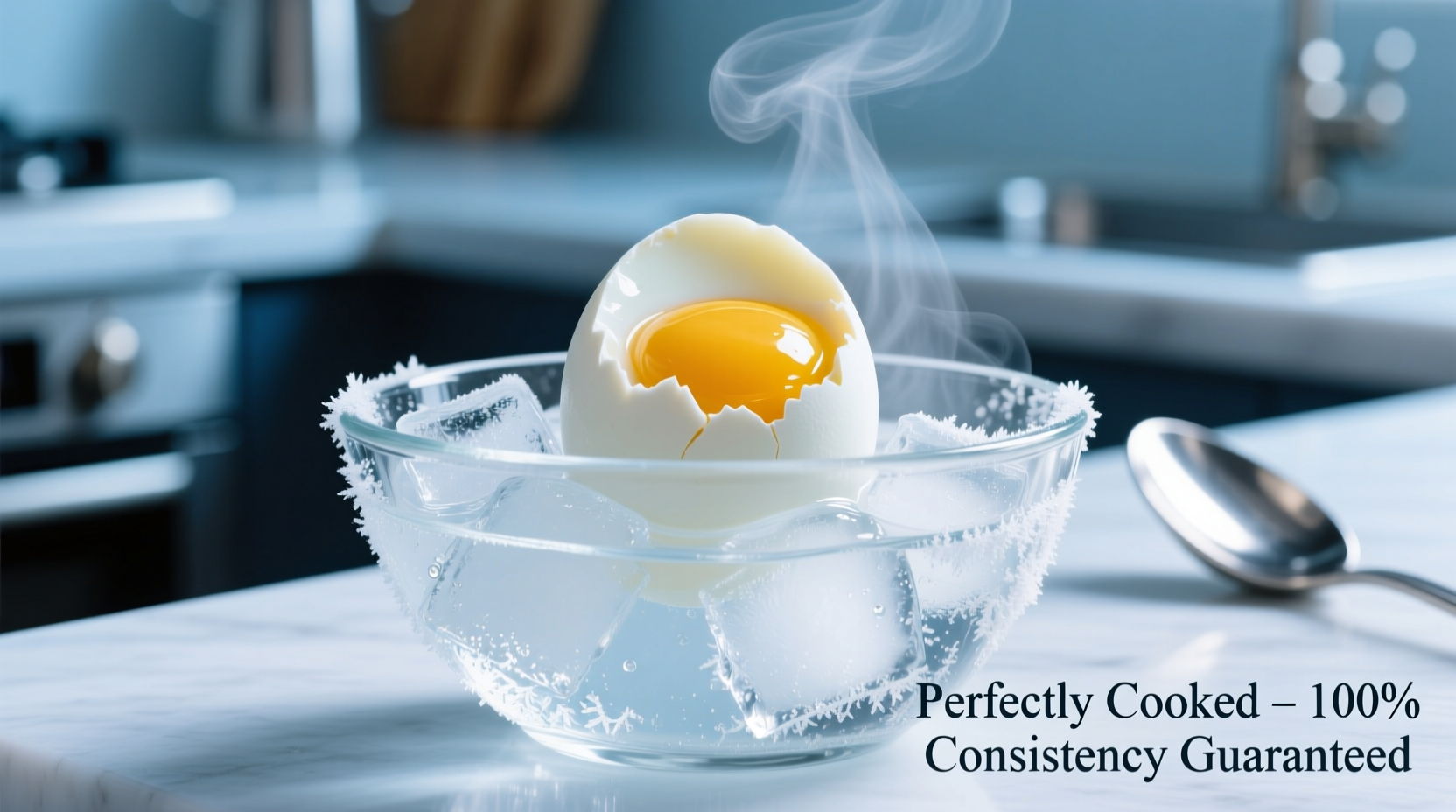Yes, you can safely cook hard boiled eggs in the microwave in just 8-10 minutes with proper technique. The key is piercing the shell before cooking and using a water bath method to prevent explosions. Follow our tested steps for perfect microwave hard boiled eggs every time.
Why Microwave Hard Boiled Eggs? The Practical Advantage
When you're short on time but need perfectly cooked hard boiled eggs, the microwave offers a surprisingly efficient solution. Unlike traditional stovetop methods that require waiting for water to boil, microwaving cuts preparation time significantly while delivering consistent results. Professional kitchens often use this technique for quick egg preparation during busy service periods.
Essential Safety Precautions: Avoiding Microwave Egg Explosions
Microwaving eggs without proper preparation can cause dangerous explosions. The USDA Food Safety and Inspection Service confirms that pressure builds rapidly inside eggshells during microwave heating, creating potential hazards.
| Safety Method | Why It Works | Professional Recommendation |
|---|---|---|
| Pierce eggshell at both ends | Releases steam pressure buildup | Use pin or thumbtack (1/16" hole) |
| Cook in water bath | Creates steam buffer around egg | 1 cup water per egg minimum |
| Never microwave dry eggs | Prevents immediate pressure explosion | Always submerge completely |
Step-by-Step Microwave Hard Boiled Egg Method
What You'll Need
- Fresh eggs (1-4, depending on microwave size)
- Deep microwave-safe bowl (at least 4" deep)
- Cold water
- Pin or thumbtack
- Tongs
- Timer
Preparation Process
- Pierce the eggs: Carefully pierce both ends of each eggshell using a pin. This critical step prevents explosions by allowing steam to escape.
- Prepare water bath: Place eggs in microwave-safe bowl and cover completely with cold water (minimum 1 inch above eggs).
- Add salt: Stir in 1 teaspoon salt per cup of water to stabilize proteins and prevent rubbery texture.
Microwave Cooking Parameters
Based on USDA temperature guidelines for safe egg preparation, follow these precise timing instructions:
- Medium-sized eggs: 8 minutes on 50% power
- Large eggs: 9 minutes on 50% power
- Extra-large eggs: 10 minutes on 50% power
After cooking, let eggs sit in hot water for 3 minutes before handling. Then transfer to ice water bath for 5 minutes to stop cooking and ease peeling.

Why This Method Works: The Food Science Explained
Egg proteins begin coagulating at 140°F (60°C), with complete solidification occurring around 180°F (82°C). The microwave method's controlled heating prevents the rapid temperature spikes that cause traditional boiling to create rubbery textures. According to the American Egg Board's cooking guidelines, gentle, consistent heating produces creamier yolks and tender whites.
Troubleshooting Common Issues
Problem: Eggs cracked during cooking
Solution: Increase piercing depth slightly or add more salt to water. Older eggs require less piercing as their air cells are larger.
Problem: Green ring around yolk
Solution: Reduce cooking time by 30 seconds. This discoloration occurs when sulfur compounds react with iron at high temperatures for extended periods.
Problem: Difficult peeling
Solution: Use eggs that are 7-10 days old rather than very fresh ones. The air pocket develops sufficiently to create separation between membrane and shell.
Storage and Usage Tips
Properly cooked microwave hard boiled eggs maintain quality for up to one week when stored in their shells in the refrigerator. Once peeled, consume within 2 days. For meal prep efficiency, prepare a batch on Sunday for weekday salads, snacks, or breakfasts.
Microwave vs. Traditional Boiling: When to Choose Which Method
While microwave cooking excels for small batches (1-4 eggs), traditional boiling remains preferable for larger quantities. The microwave method saves approximately 15 minutes per batch compared to waiting for water to boil on the stovetop. However, for preparing more than 4 eggs at once, conventional boiling becomes more energy efficient.
Can you microwave eggs without water?
No, never microwave eggs without water. The USDA explicitly warns against dry microwaving of eggs due to explosion risks. Always submerge eggs completely in water with at least 1 inch of coverage for safe microwave hard boiled eggs preparation.
Why do my microwave hard boiled eggs have rubbery whites?
Rubbery texture typically results from excessive microwave power or time. Cook eggs at 50% power setting and follow precise timing based on egg size. The American Egg Board confirms that gentle, consistent heating prevents protein over-coagulation that causes rubberiness.
How do I prevent green rings around the yolk?
Green rings form when eggs overcook, causing sulfur compounds to react with iron in the yolk. Reduce cooking time by 30 seconds and ensure immediate transfer to an ice bath after cooking. Proper timing based on egg size prevents this common issue.
Are microwave hard boiled eggs as nutritious as traditionally cooked ones?
Yes, nutritional content remains identical regardless of cooking method. The USDA confirms that cooking method doesn't significantly alter the protein, vitamin, or mineral content of eggs when proper temperatures are maintained. Both methods deliver the same 6 grams of high-quality protein per large egg.
Can I use this method for soft boiled eggs?
Yes, reduce cooking time to 5-6 minutes at 50% power for soft boiled results. The precise timing allows you to achieve your preferred yolk consistency, from jammy to fully set, while maintaining safety through the water bath method.











 浙公网安备
33010002000092号
浙公网安备
33010002000092号 浙B2-20120091-4
浙B2-20120091-4